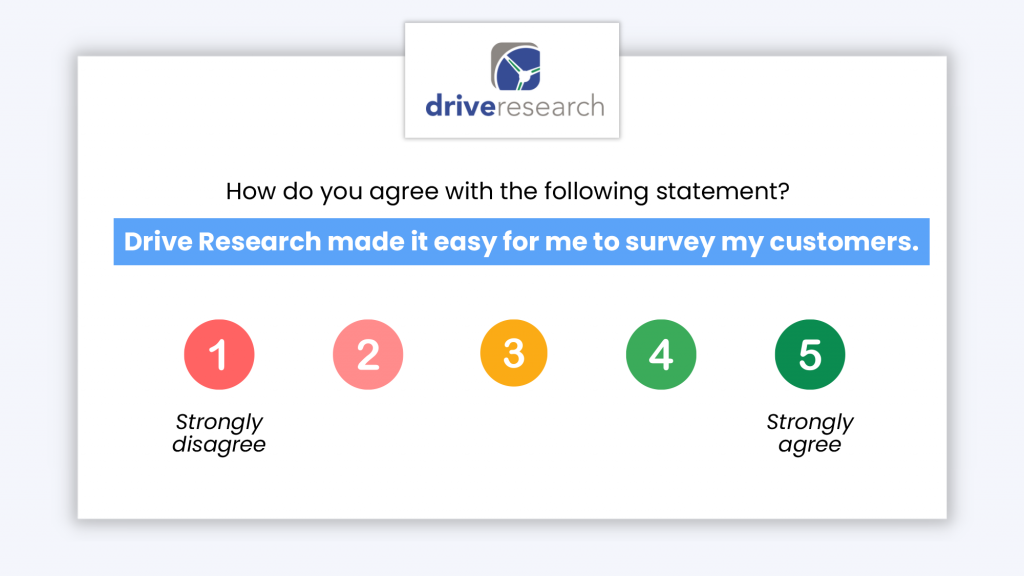
When designing a quantitative survey, asking the right types of questions is essential for collecting meaningful, reliable data. While this form of research is rooted in numbers and structure, that doesn’t mean your question options are limited or one-size-fits-all.
From rating scales to ranking questions to demographic profiling, there are many ways to gather clear, actionable insights from your audience.
In this post, our quantitative market research company walks through the most effective types of quantitative questions to include in your next study, whether it’s conducted online, over the phone, or by email.
What Are Quantitative Survey Questions?
Quantitative survey questions are designed to collect structured, numerical data that can be measured and analyzed statistically.
These questions typically include fixed-response options such as multiple choice, rating scales, or yes/no answers. They help researchers identify patterns, trends, and relationships within a target audience.
Unlike open-ended (qualitative) questions, quantitative questions are ideal for drawing generalizable conclusions and supporting data-driven decision-making.
Before writing your survey, it is vital to understand the difference between these two research methods.
Quantitative Questions: Focus on hard data. The results are objective and conclusive.
- Example: “On a scale of 1-5, how satisfied are you?”
Qualitative Questions: Focus on feelings and motivations. The results are subjective and exploratory.
- Example: “Describe how our product makes you feel.”
Ideally, a comprehensive survey uses a hybrid approach: asking a quantitative question to get the score, followed by a qualitative question to understand the context.
Benefits of Quantitative Market Research
Quantitative data can be beneficial to any market research study.
Most commonly, quantitative research compares several variables against one another, which leads to important findings and helps companies make better business decisions.
It places a numerical value or percentage on insightful consumer information such as:
- 52% of our target consumers are Millennials.
- 65% of our customers because aware of our brand through social media.
- 25% of our target consumers perceive our brand as too expensive.
Moreover, the data collected from an online survey is based on larger samples than that of a focus group. Therefore, the data is often more statistically reliable.
It is often the reason Drive Research recommends a hybrid research approach for our clients.
Keep reading as we explore different styles of quantitative market research questions to use and how best to use them.
Example Quantitative Survey Questions
When it comes to qualitative research, the possibilities for data collection feel nearly limitless — from focus groups to one-on-one interviews. These methods are often seen as creative and exploratory, offering rich, detailed insights.
But what about quantitative research?
At first glance, the structured nature of numbers-based research might seem more rigid — even a little dull. However, that couldn’t be further from the truth.
Below is a list of the best quantitative questions to include in your next survey that will maximize the
Question Type #1: Dichotomous
Dichotomous questions offer two fixed answer choices, such as yes/no or true/false. They work best when there are only two logical response options and the goal is to collect straightforward, clean data.
Example Questions:
- Have you purchased from our website in the past 6 months? (Yes/No)
- Do you currently have a gym membership? (Yes/No)
- I understand how to use the new software system. (True/False)
📝 Tip: Avoid using dichotomous questions for topics that may be more nuanced or require elaboration.
Question Type #2: Multiple Choice (Single Answer)
This is one of the most common question types, offering several predefined response options — with only one allowed selection. It’s ideal when you want to measure preference or frequency from a controlled list of answers.
Example Question: What is your primary reason for visiting our store today?
- To make a purchase
- To browse
- To return an item
- Other (please specify)
📝 Tip: Always consider adding “Other (please specify)” to capture unique responses.
Question Type #3: Multiple Answer (Select All That Apply)
This format allows respondents to select more than one option. It’s useful when more than one answer could be true or applicable.
Example Question: Which of the following social media platforms do you use regularly? (Select all that apply)
- TikTok
- X (Twitter)
- Other (please specify)
📝 Tip: These are best used when the number of selections will provide actionable insights.
Question Type #4: Likert Scale
Likert scale questions help measure attitudes or opinions across a balanced range. Common themes include agreement, satisfaction, importance, and likelihood.
Example Question: How satisfied are you with your recent customer service experience?
- Very dissatisfied
- Somewhat dissatisfied
- Neutral
- Somewhat satisfied
- Very satisfied
📝 Tip: Use Likert scales when you need nuanced feedback about feelings, experiences, or opinions.

Question Type #5: Semantic Differential
This question type uses opposite adjectives at each end of a scale to measure respondents’ attitudes. It’s useful for evaluating brand perception, user experience, or emotional response.
Example Question: Please rate your experience with our website
Easy to use ⬜⬜⬜⬜⬜ Difficult to use
📝 Tip: Semantic differential is great for visualizing subtle perception differences.
Question Type #6: Rank Order
Rank order questions ask respondents to prioritize a list of items based on preference or importance. This helps uncover what matters most to your audience.
Example Question: Please rank the following factors in order of importance when choosing a streaming service (1 = most important):
- Price
- Content selection
- User interface
- Offline viewing
- Device compatibility
📝 Tip: Keep the list manageable (ideally 5–7 options) to avoid fatigue.
Question Type #7: Matrix
Matrix questions combine several similar Likert-style questions into one organized grid, allowing for quicker responses and easier comparison.
Example Matrix Question: How satisfied are you with the following aspects of our service?
| Aspect | Very Dissatisfied | Dissatisfied | Neutral | Satisfied | Very Satisfied |
|---|---|---|---|---|---|
| Speed of service | ⬜ | ⬜ | ⬜ | ⬜ | ⬜ |
| Friendliness of staff | ⬜ | ⬜ | ⬜ | ⬜ | ⬜ |
| Accuracy of order | ⬜ | ⬜ | ⬜ | ⬜ | ⬜ |
📝 Tip: Use matrix questions when asking the same type of question about multiple items to streamline the experience.
How many questions should be in a quantitative survey?
For online surveys, brevity is key. A good rule of thumb is 10 to 15 questions, which should take respondents 5 to 7 minutes to complete. If the survey takes longer than 10 minutes, completion rates tend to drop significantly.
When to Use Quantitative Research Questions
Measurable data is essential for identifying trends, making informed decisions, and drawing generalizations. The question types covered above can be used across several common forms of quantitative market research, including:
🌐 Online Surveys
One of the most popular and accessible ways to collect quantitative data.
- Easy to distribute via email, websites, or social media
- Convenient for smartphone and desktop users
- Ideal for reaching a broad and diverse audience
📱 Phone Surveys
Offer a more personalized experience.
- Great for targeting specific demographics
- Allows for interviewer clarification when needed
- Often used for customer satisfaction or political polling
📨 Mail Surveys
A traditional yet effective method.
- High response rates among older or rural populations
- Useful when targeting a geographically defined audience
- Tangible and familiar format for many respondents
🧍 In-Person Surveys (Intercepts)
Often conducted in high-traffic areas like stores or events.
- High engagement due to face-to-face interaction
- Capture immediate, in-the-moment feedback
How to Ensure Accurate and Insightful Survey Data
To collect insightful data from your quantitative surveys, it’s important to focus on clear, well-designed questions and a thoughtful survey distribution strategy.
Start by ensuring your survey questions are precise and aligned with your research goals, avoiding ambiguity that could lead to inaccurate or unreliable responses. Use a mix of question types—such as Likert scales, multiple-choice, and rank-order questions—to gather a variety of data points that offer a comprehensive view of your target audience.
Additionally, make sure your survey reaches a representative sample of your target population. Consider using online survey tools to maximize reach, or incorporate phone and mail surveys if personal touchpoints are necessary. Here is the rest of the best practices we follow:
- Avoid Leading Questions: Don’t phrase a question to influence the answer (e.g., “How amazing was our service?” vs “How would you rate our service?”).
- Cover All Options: Ensure your multiple-choice answers are mutually exclusive and collectively exhaustive.
- Keep it Concise: Long surveys lead to fatigue. Only ask questions that directly contribute to your research objectives.
- Test Your Survey: Before sending it to 1,000 people, send it to 10 colleagues to check for logic errors or confusing wording.
To further enhance the quality of your responses, keep your surveys concise and user-friendly, and be mindful of response bias by offering a balanced set of answer choices. Lastly, analyze the collected data thoroughly to uncover meaningful trends and patterns that will drive informed business decisions.
Conduct Quantitative Research with Our Team
At Drive Research, we specialize in designing and executing custom quantitative research that delivers clear, actionable insights. Whether you’re looking to understand customer satisfaction, test a new product, or measure brand awareness, our team manages the entire process—from writing survey questions to analyzing results. We combine proven methodologies with modern tools to ensure high data quality and fast turnaround times.
Ready to get started? Let’s talk about your next project.



